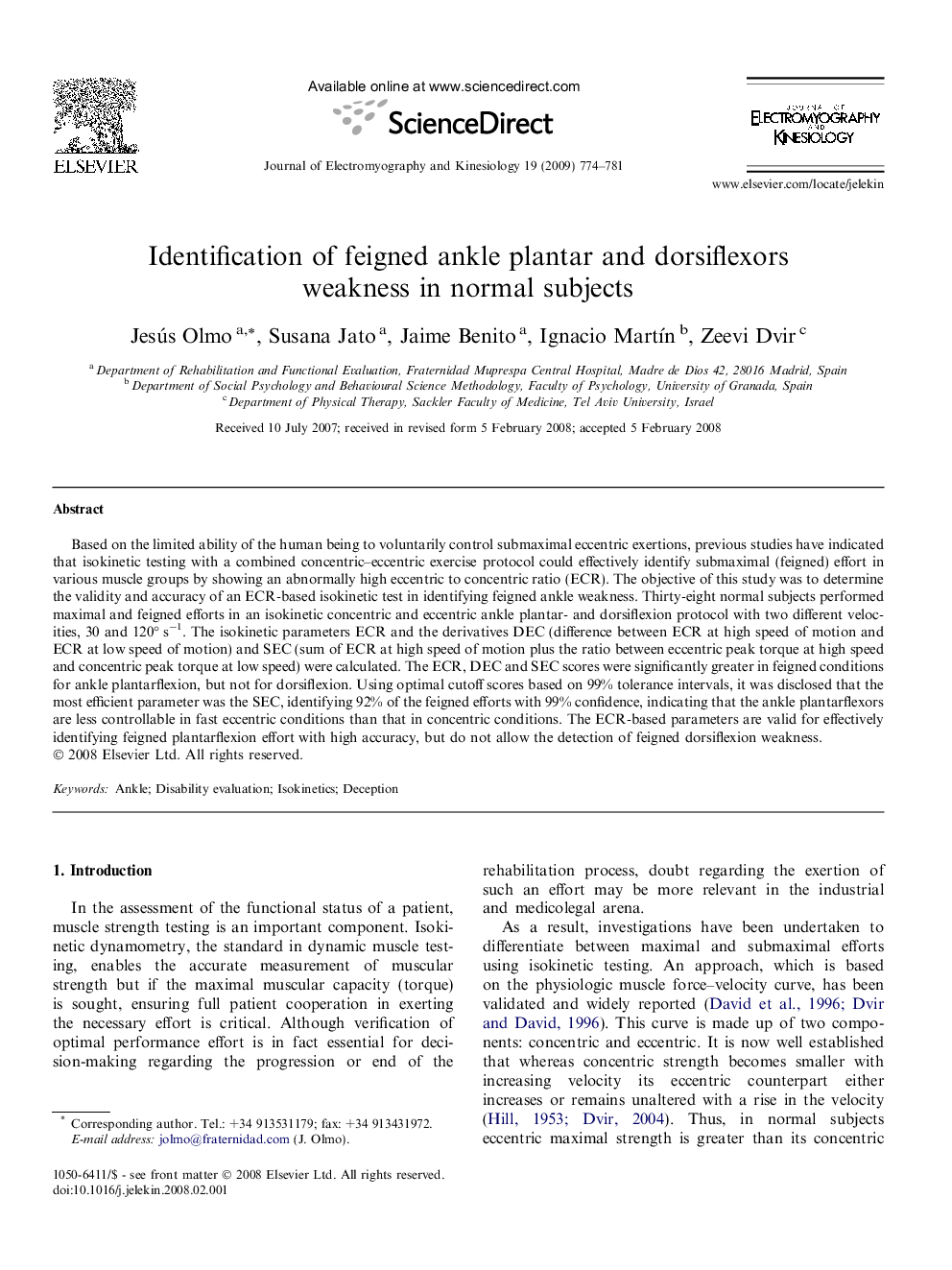| Article ID | Journal | Published Year | Pages | File Type |
|---|---|---|---|---|
| 4065215 | Journal of Electromyography and Kinesiology | 2009 | 8 Pages |
Based on the limited ability of the human being to voluntarily control submaximal eccentric exertions, previous studies have indicated that isokinetic testing with a combined concentric–eccentric exercise protocol could effectively identify submaximal (feigned) effort in various muscle groups by showing an abnormally high eccentric to concentric ratio (ECR). The objective of this study was to determine the validity and accuracy of an ECR-based isokinetic test in identifying feigned ankle weakness. Thirty-eight normal subjects performed maximal and feigned efforts in an isokinetic concentric and eccentric ankle plantar- and dorsiflexion protocol with two different velocities, 30 and 120° s−1. The isokinetic parameters ECR and the derivatives DEC (difference between ECR at high speed of motion and ECR at low speed of motion) and SEC (sum of ECR at high speed of motion plus the ratio between eccentric peak torque at high speed and concentric peak torque at low speed) were calculated. The ECR, DEC and SEC scores were significantly greater in feigned conditions for ankle plantarflexion, but not for dorsiflexion. Using optimal cutoff scores based on 99% tolerance intervals, it was disclosed that the most efficient parameter was the SEC, identifying 92% of the feigned efforts with 99% confidence, indicating that the ankle plantarflexors are less controllable in fast eccentric conditions than that in concentric conditions. The ECR-based parameters are valid for effectively identifying feigned plantarflexion effort with high accuracy, but do not allow the detection of feigned dorsiflexion weakness.
